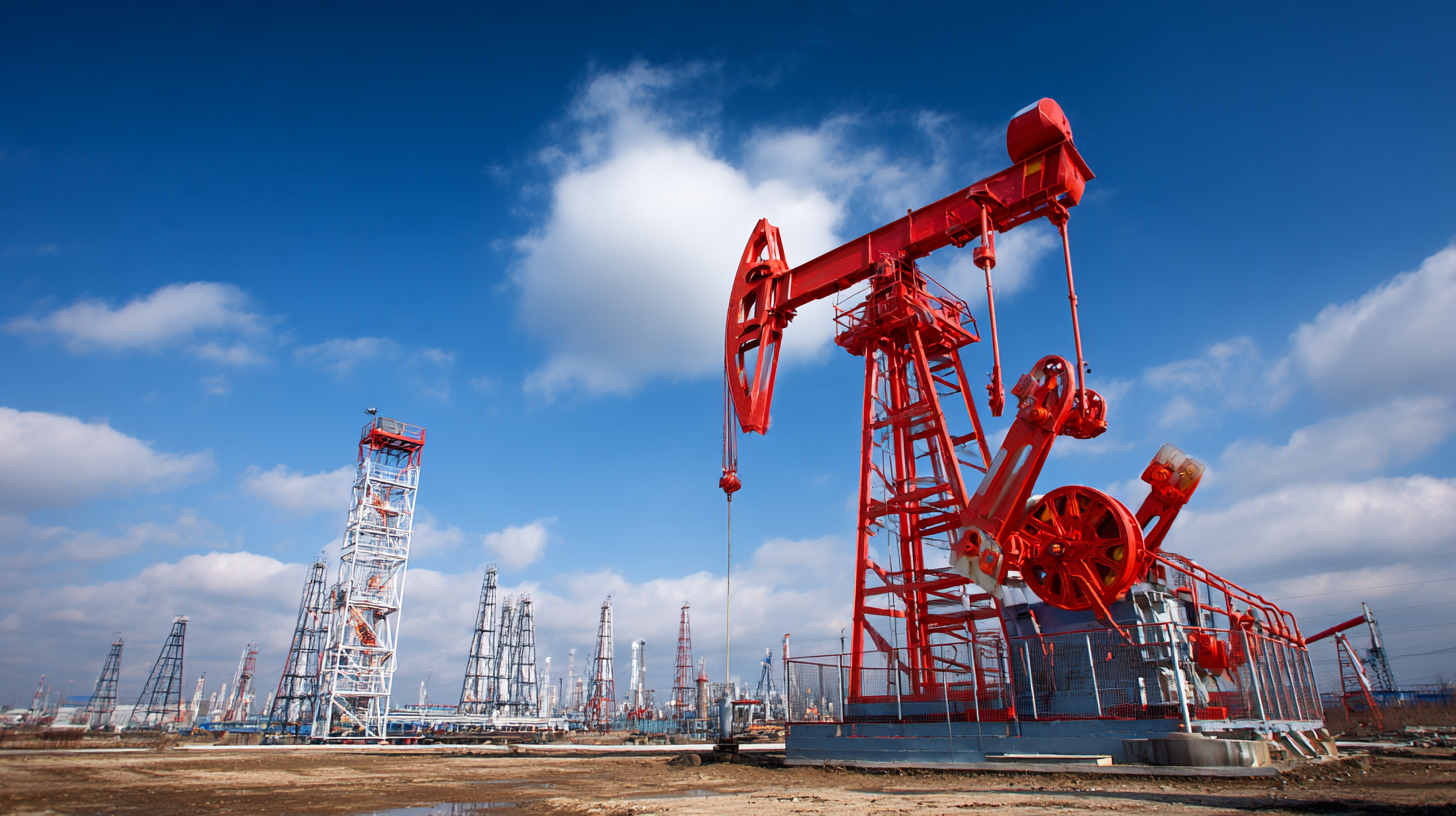
In the oil industry, the crude pump plays a critical role in the efficient extraction and transportation of crude oil, a vital commodity driving global economies. According to the U.S. Energy Information Administration (EIA), global crude oil production reached approximately 97.1 million barrels per day in 2021, highlighting the immense scale of operations reliant on effective pumping systems. Crude pumps are designed to handle the viscosity and abrasive characteristics of crude oil, ensuring continuous flow and minimizing downtime during extraction processes.

As the industry continues to evolve, with advancements in technology and increased demand for energy, understanding the function and importance of crude pumps becomes essential for optimizing production efficiency and enhancing operational reliability. With the crude oil market projected to grow further, it is vital for industry professionals to grasp the mechanics and innovations surrounding crude pumps, which are instrumental in meeting global energy needs.
A crude pump is a vital component in the oil extraction process, facilitating the movement of crude oil from underground reservoirs to the surface. These pumps are specifically designed to handle the unique properties of crude oil, which can vary in viscosity and density. By employing mechanical energy to create suction, crude pumps effectively draw oil to the surface, where it can be processed and refined. Their design often incorporates features such as corrosion resistance and durability to withstand harsh environmental conditions typical in oil fields.
In the oil industry, the importance of crude pumps cannot be overstated. As extraction techniques have evolved, the efficiency and reliability of these pumps have become crucial in maximizing production rates and minimizing operational costs. Modern crude pumps are equipped with advanced technology, including sensors and control systems, to monitor performance and optimize operations in real-time. This not only enhances the extraction process but also ensures environmental safety by reducing the risk of spills and leaks.
In essence, crude pumps play a crucial role in both the economics of oil production and the sustainability efforts within the industry.
Crude pumps are essential components in the oil industry, facilitating the movement of crude oil from extraction sites to refineries and storage facilities. One of the key types of crude pumps is the centrifugal pump. Centrifugal pumps operate by using rotational energy to convert mechanical energy into hydraulic energy, effectively transferring crude oil through pipes with high efficiency. These pumps are favored for their ability to handle large volumes and are commonly used in upstream and midstream processes where steady flow rates are critical.
Another important type is the positive displacement pump, which is particularly effective for handling viscous crude oils. Positive displacement pumps work by trapping a fixed amount of fluid and forcing it through the pump's discharge, ensuring a consistent flow regardless of pressure changes. This feature makes them ideal for transporting heavy crude oil that traditional centrifugal pumps may struggle with. Applications of these pumps can be found across various sectors of the oil industry, including production, transportation, and refining, underscoring their vital role in maintaining operational efficiency.
Crude pumps are essential components in the oil industry, designed to transport crude oil from extraction points to refineries or storage facilities. Their operational mechanisms vary, but they primarily rely on principles of suction, displacement, and pressure to moving liquids efficiently. Positive displacement pumps, for instance, capture oil in a chamber and then force it out, while centrifugal pumps use rotational energy from impellers to create pressure and propel the oil through pipelines.
When discussing the common operational mechanisms of crude pumps, it’s important to note the significance of maintaining proper pressure levels. Maintaining consistency in pressure is crucial for optimal performance and can prevent disruptions caused by cavitation or vapor lock.
**Tips:** Regularly check the pump’s seals and gaskets, as maintenance helps prevent leaks that could compromise efficiency. Additionally, incorporating flow meters can provide real-time data on the pump's operation, allowing for quicker adjustments and minimizing downtime. Understanding the mechanics of these pumps not only enhances efficiency but also prolongs their lifespan and boosts overall productivity in the oil industry.
| Mechanism | Description | Operation Type | Efficiency | Maintenance Frequency |
|---|---|---|---|---|
| Centrifugal Pump | Uses rotational energy to move crude oil | Continuous | High (70-85%) | Monthly |
| Positive Displacement Pump | Moves oil by trapping a fixed amount and forcing it through | Intermittent | Moderate (60-75%) | Quarterly |
| Gear Pump | Utilizes gears to transfer oil from inlet to outlet | Continuous | High (75-90%) | Biannual |
| Diaphragm Pump | Uses a diaphragm to create a vacuum and draw fluid in | Intermittent | Moderate (50-70%) | Semiannual |
 Crude pumps play a vital role in the transportation of crude oil within the oil industry, and understanding their technical specifications, particularly flow rates and efficiency, is essential for optimizing operations. Flow rate refers to the volume of oil that can be moved by the pump over a given period, typically measured in barrels per minute (BPM). Higher flow rates are desirable as they enable faster transportation and reduced operational costs. However, achieving elevated flow rates often requires a careful balance with other factors, such as energy consumption and maintenance needs.
Crude pumps play a vital role in the transportation of crude oil within the oil industry, and understanding their technical specifications, particularly flow rates and efficiency, is essential for optimizing operations. Flow rate refers to the volume of oil that can be moved by the pump over a given period, typically measured in barrels per minute (BPM). Higher flow rates are desirable as they enable faster transportation and reduced operational costs. However, achieving elevated flow rates often requires a careful balance with other factors, such as energy consumption and maintenance needs.
Efficiency is another critical measure in evaluating crude pumps, as it indicates how effectively a pump converts electrical energy into mechanical energy to move crude oil. This is often expressed as a percentage, with higher efficiency translating to lower energy costs and a reduced environmental footprint. Factors affecting efficiency include the pump design, the viscosity of the fluid being pumped, and the operating conditions. By investing in high-efficiency pumps and regularly analyzing their performance based on flow rates, oil companies can enhance their productivity and sustainability while mitigating the risks of pipeline failures and other operational challenges.
Recent innovations in crude pump technology have significantly transformed the oil industry, enhancing production efficiency and operational reliability. One notable advancement is the integration of smart sensors and IoT technology into crude pumps. These sensors monitor various parameters such as pressure, flow rate, and temperature in real-time, enabling operators to anticipate potential failures before they occur. This predictive maintenance approach helps to minimize downtime and reduces maintenance costs, ultimately leading to more consistent production rates.
Additionally, advancements in pump materials and designs have contributed to improved performance and longevity. The use of corrosion-resistant materials and innovative sealing technologies has increased the durability of pumps, allowing them to operate in harsh environments without frequent replacements. Furthermore, the development of more efficient impeller designs has optimized fluid dynamics, resulting in lower energy consumption and enhanced pumping capacity. These improvements not only drive down operational costs but also support sustainable practices by reducing the environmental impact of crude oil extraction and transportation.

We are here to help you with all your queries and concerns, just write to us using the below form and we will get back to you as soon as we can.